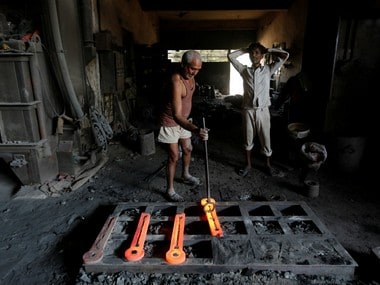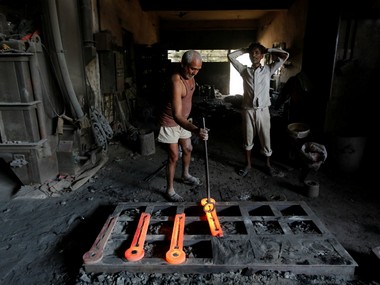The gross domestic product (GDP) growth rates will remain in the news for quite some time now. It was first the case of the revised back series which generated controversy. Next is the Q2 numbers which were expected to indicate moderation, especially so as it was believed that the 8.2 percent number in GDP in Q1 was more due to the comfort of a low base last year when GST came in. Against this background, the presentation of the GDP growth number at 7.1 percent comes lower than what was expected at 7.5 percent but higher than 6.3 percent last year. What do these numbers show? Growth in gross valued added (GVA) was 6. percent over 6.1 percent last year which is not really bad, though could have been higher based on the consensus estimate of around 7.3 percent (which was what CARE has projected). The sector-wise growth rates, however, are interesting. Agriculture growth at 3.8 percent comes in higher which can be more due to the allied services as while kharif has been good on the whole, there have been shortfalls in pulses, millets and groundnut. Therefore, this has been a positive for the economy. Negative growth in mining is a concern because it is normally linked with policies which vary across states that come in the way, though admittedly there was a base effect here. [caption id=“attachment_4391191” align=“alignleft” width=“380”]  Representational image. Reuters.[/caption] When we look at manufacturing, there are signs of sustenance witnessed with growth of 7.4 percent on top of 7.1 percent last year. This is lower than 13.5 percent in Q1 this year which had the benefit of the GST which affected this sector the most. However, given that corporate profits recovered sharply this quarter one may have expected higher growth from this sector which did not materialise. It is probably this segment which came in the way of higher GVA growth for the economy. Electricity and construction have been two leading sectors which have been fairly consistent in growth. The latter can be attributed more to the government as private spending is still low key. Therefore, when we talk of whether or not the government will have to cut back on capex this year to balance the budget, the allusion is to this component. The latest fiscal deficit shows that we are beyond 100 percent the target and hence unless there is a reversal in the trends in revenue on the tax collection front and disinvestment, there could be challenges for the government and the economy in case capex is curtailed. The trade sector, which is linked to the others, has done lower than average at 6.8 percent but satisfactory given the higher base growth of 8.5 percent last year. This is also a reflection of the GST collections which comes in the calculation and hence will have to be monitored closely to track growth in this segment among other factors relating to transportation. Growth in the financial sector continues to be in the 6-6.5 percent range in the first two quarters and will be the main variable to watch out for in Q3. This is so because the NBFC crisis was more in this period where overall activity of the banking sector has been affected with the liquidity issue surfacing. It would be of interest as to how this sector progresses. Last, the growth in the public administration component has been in double digits which reflect the revenue expenditure minus subsidies of the government. This has been responsible for ushering in growth and will be on path as most of this is committed. The other factor one looks at in this data is the investment rate which surprisingly shows an increase, i.e. gross fixed capital formation at current prices. While this does show an improvement of 1.3 percent over last year and 0.4 percent over Q1, it does come as a surprise. This is so because private investment does appear to be taking place at an accelerated pace with the debt market as well as banking system not witnessing much buoyancy. One can surmise that this is due to government spending primarily and hence again the way the fiscal is tackled will hold a clue for future movement here. Consumption spending too has declined in terms of share in GDP over Q1 though marginally lower than in Q2 last year. This may be expected to revive over the next two quarters with the rural push providing further clues.
How is one to look forward? While a higher growth in Q2 would have provided a cushion to reach growth of 7.5 percent for the full year, it would now be a case of similar growth rate in the region of 7.4-7.5 percent to be registered henceforth in the next two quarters consistently, which will not have the comfort of the low base effect as growth was 7 percent and 7.7 percent respectively in Q3 and Q4.
More importantly, the government has to keep up with the spending on both capital and revenue accounts to keep it sustainable with the aggregate fiscal deficit number in mind all the time. That would be the crux. (The writer is chief economist, CARE Ratings)


)

)
)
)
)
)
)
)
)



